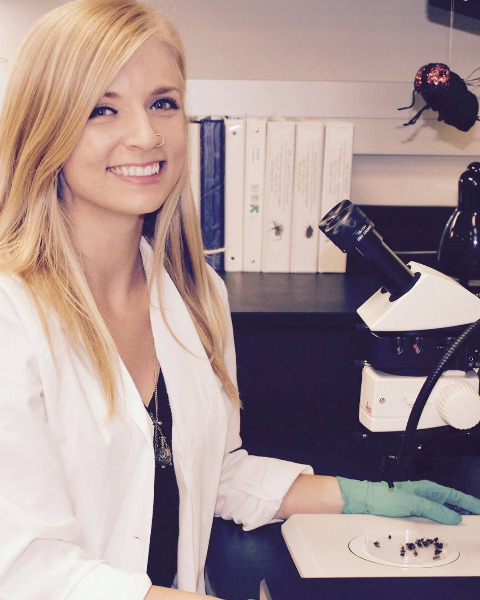Section Symposium
Medical, Urban, and Veterinary Entomology
Increasing Societal Impacts of Forensic Entomology: Standardizing Practices and Novel Applications
Environmental forensic entomology: The fourth subdiscipline
Tuesday, November 12, 2024
8:45 AM - 9:05 AM MST
Location: Phoenix Convention Center, 130, PCC

Charity Owings
Postdoctoral Fellow
University of Tennessee
Knoxville, Tennessee
Presenting Author(s)
The use of arthropods in a medicolegal framework is well-known and now constitutes an almost routine methodology in forensic death investigations. Typically, the life cycle and community composition of carrion arthropods can be used to establish a timeframe of events occurring after death of an individual. However, because of their unique life strategies (e.g., the precise detection, location, and exploitation of ephemeral resources) and high dispersal abilities as adults, carrion arthropods can reveal much more information than meets the eye. In recent years, carrion arthropods (like the ubiquitous blow fly) have revealed important biological and chemical information regarding the substrates that they routinely visit in a natural environment – animal carcasses, feces, microbes, parasites, and even hazardous chemicals. These insects can act as drones, passively acquiring vast amounts of biological and chemical information that can easily be extracted by investigators, given they know what to look for and what methodologies are available for such an analysis. In this presentation, we will discuss the different ways that carrion arthropods, particularly blow flies, have been used as proxies to assess the health of the local environment and how these methodologies can be leveraged in a forensic context. We will also outline recommendations for future research in this area and propose guidelines for the use of such data in a legal setting. Finally, we will propose this discipline (Environmental Forensic Entomology) as the fourth subdiscipline of Forensic Entomology, which currently includes Stored Products Entomology, Urban Entomology, and Medicolegal Entomology.

.png)
